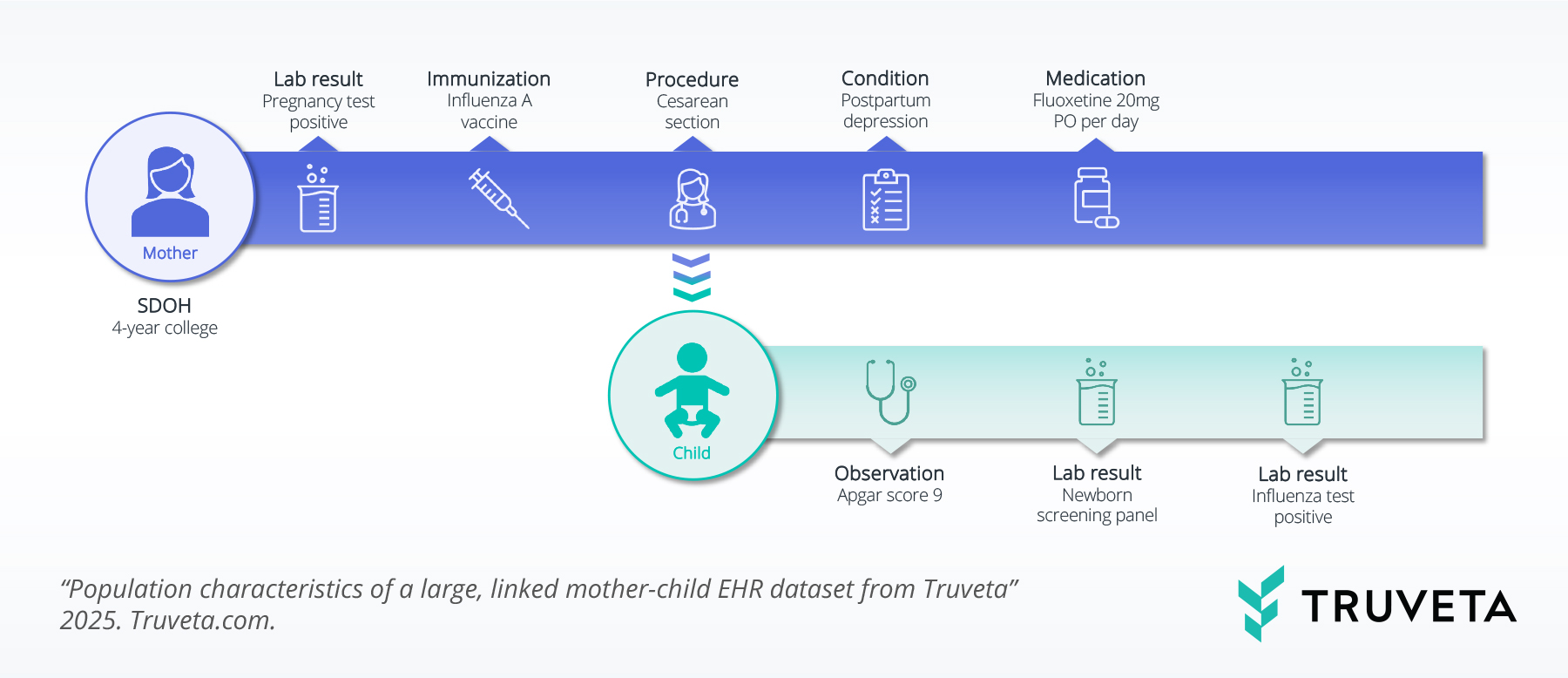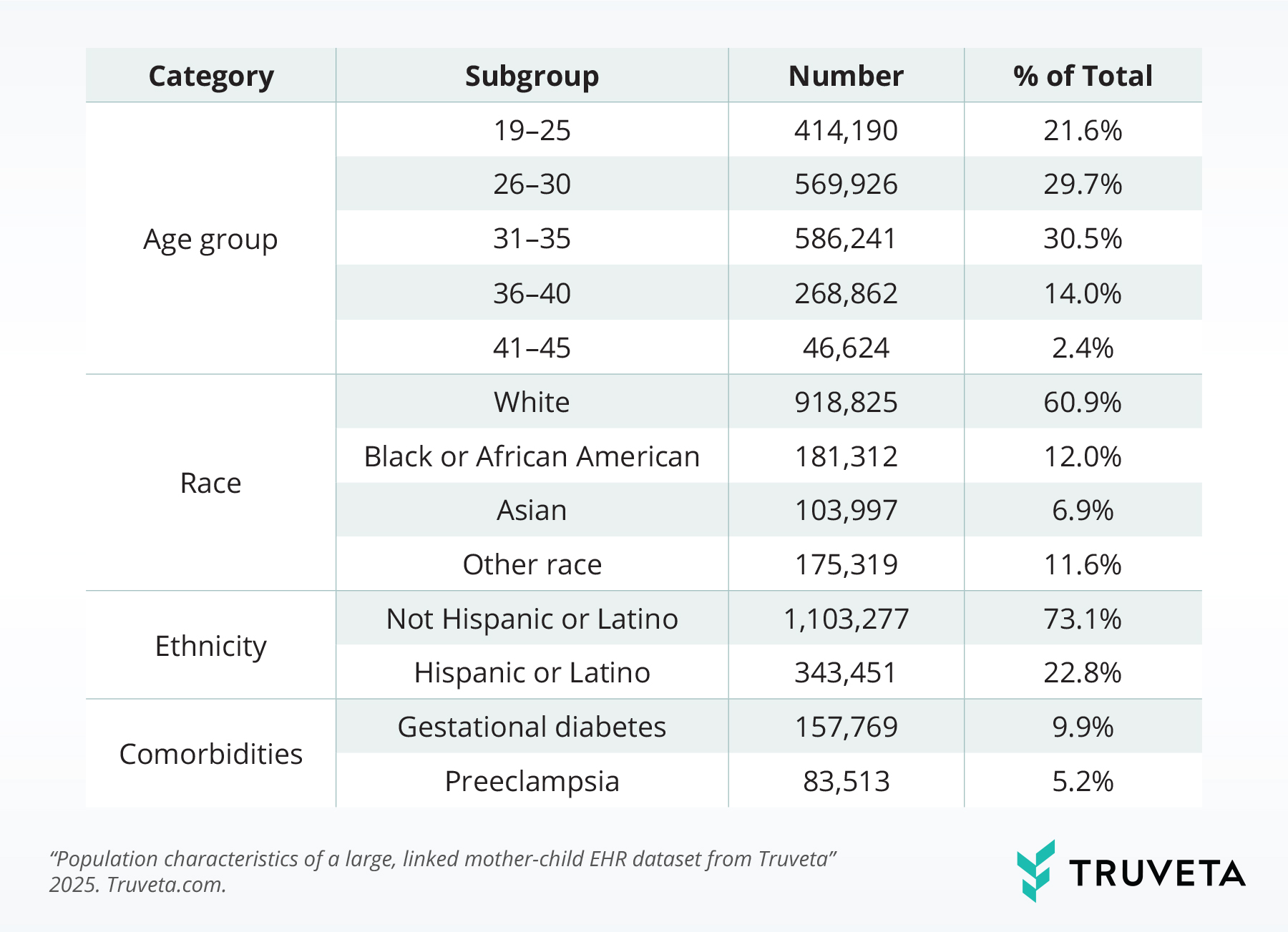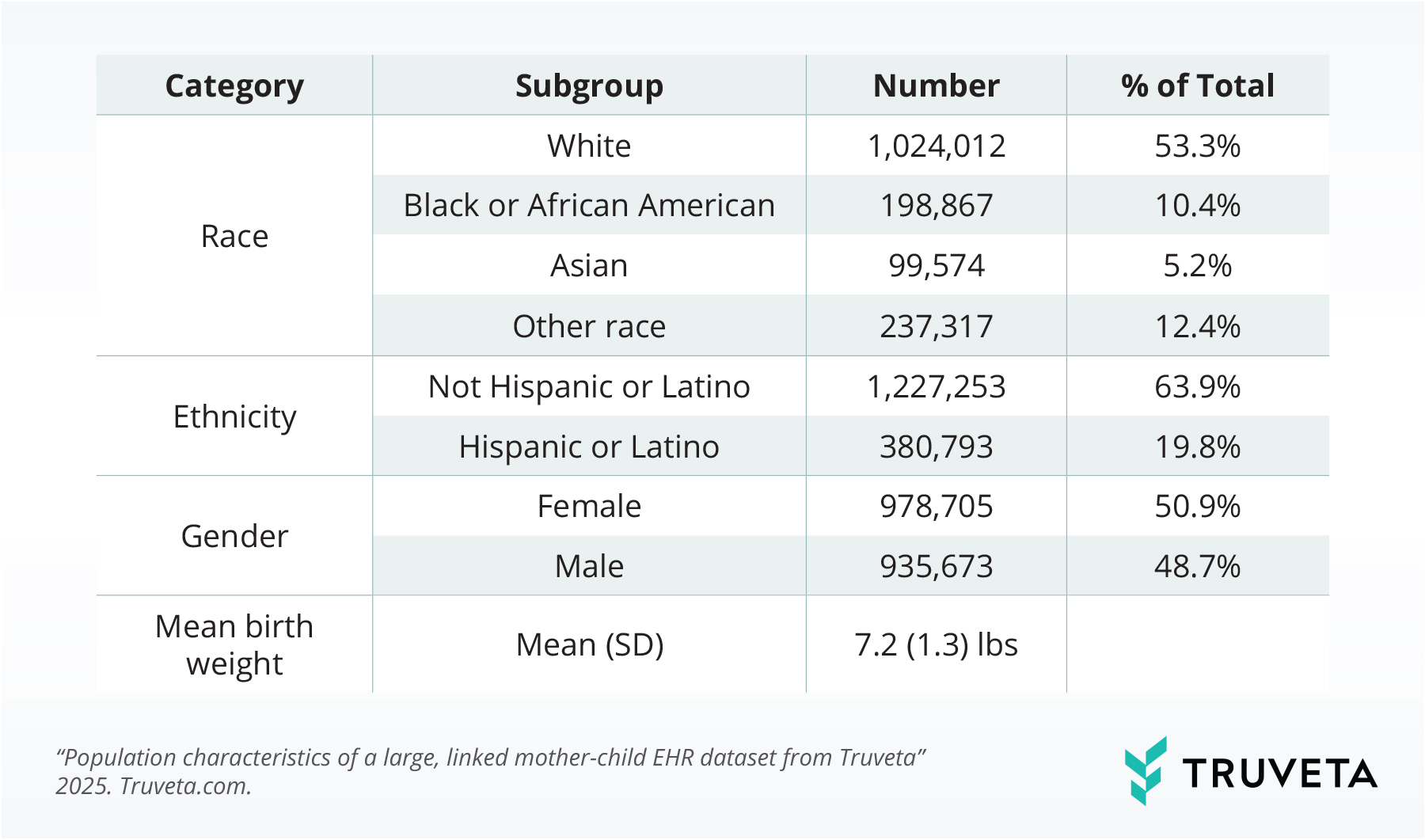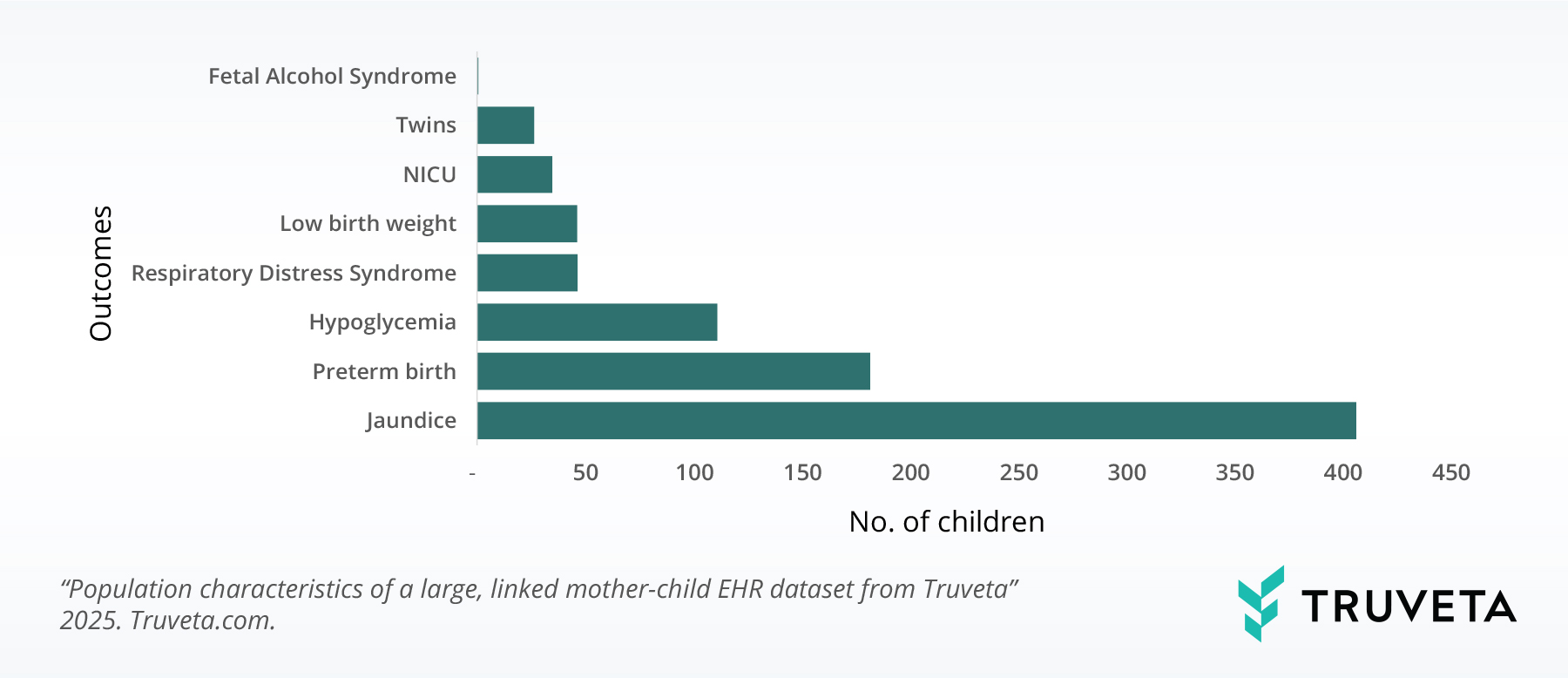Authors: Katherine Brown, PhD, MSN, RN ⊕Truveta, Inc, Bellevue, WA, Katherine Kendrick, MPH ⊕Truveta, Inc, Bellevue, WA, Amy Wu ⊕Truveta, Inc, Bellevue, WA, Annika Faucon, PhD ⊕Truveta, Inc, Bellevue, WA, Jordan Swartz, MD ⊕Truveta, Inc, Bellevue, WA, Sunny Guin, PhD ⊕Truveta, Inc, Bellevue, WA, Emily Webber, PhD ⊕Truveta, Inc, Bellevue, WA
- Truveta’s linked mother–child dataset enables large-scale, real-world research on maternal and infant health, helping close evidence gaps for underrepresented populations.
- The dataset includes over 1.5 million mothers and 1.9 million children, with rich demographic and clinical detail.
- Infants born to mothers with gestational diabetes had more than twice the rate of neonatal hypoglycemia compared with the overall cohort.
- Maternal comorbidity rates aligned with published estimates, while some infant outcomes appeared lower than expected—highlighting opportunities to enhance data completeness.
This blog extends findings from our poster, “Population characteristics of a large, linked mother-child EHR dataset from Truveta,” presented at ISPOR Europe in November 2025.
Pregnant women and their children are a critical and historically underrepresented population in clinical research. Linking maternal and infant health records enables retrospective studies of treatment safety, utilization, and outcomes across pregnancy, delivery, and early childhood.
Truveta’s mother-child linked data offer a large and timely resource for studying maternal and infant health across diverse populations. In this analysis, we describe demographic and clinical characteristics of the dataset and examine the prevalence of key maternal and infant outcomes.
Methods
Truveta deterministically links the electronic health record (EHR) of a mother with those of her children using source data provided by member health systems. This analysis included data from mothers with linked children recorded on or before May 2025.
Descriptive statistics were generated using Truveta Studio. The analysis focused on demographic and clinical characteristics, as well as the prevalence of key maternal and infant outcomes.

Results
The dataset included 1,509,087 mothers and 1,921,387 children, with a mean of 1.27 children per mother (SD 0.55).
The average maternal age was 29.9 years (SD 5.7), with 60.9% identifying as White and 73.1% as not Hispanic or Latino (1). Among maternal comorbidities, 9.9% had gestational diabetes (2), and 5.2% had preeclampsia.
For demographics of the linked children, 53.3% were White, 63.9% were not Hispanic or Latino, 50.9% were male, and 3.3% were twins; the mean birth weight was 7.2 lbs (SD 1.3) (1). Infant outcomes included preterm birth (2.9%), jaundice (25.6%), hypoglycemia (7.0%), and respiratory distress syndrome (2.9%).
Notably, among children born to mothers with gestational diabetes, 15.8% experienced hypoglycemia—more than double the overall rate. Mothers had a mean follow-up of 2.6 years (SD 2.8), while children had 1.9 years (SD 2.6), enabling longitudinal tracking of outcomes.
Baseline characteristics of mothers

Baseline characteristics of linked children

Outcomes for linked children

Discussion
Truveta’s mother-child linked data provide a large, timely, and representative resource for real-world studies of maternal and pediatric health. The analysis confirms known risks, such as elevated neonatal hypoglycemia with gestational diabetes, and shows maternal comorbidity rates consistent with published estimates.
Lower-than-expected rates of some infant outcomes suggest future research should incorporate additional data (e.g., labs and procedures) to improve completeness. The longitudinal nature of these data supports ongoing tracking of maternal and child health outcomes, offering opportunities for future studies on perinatal care, treatment safety, and long-term development.
These findings are consistent with data accessed on May 22, 2025. They are preliminary research findings and not peer reviewed; data are constantly changing and updating.
Citations
- Centers for Disease Control and Prevention. Births and Natality. CDC FastStats. Last reviewed September 17, 2025. Accessed October 8, 2025. https://www.cdc.gov/nchs/fastats/births.htm
- Eades C, Burrows KA, Andreeva R, Stansfield DR, Evans JMM. Prevalence of gestational diabetes in the United States and Canada: a systematic review and meta-analysis. BMC Pregnancy Childbirth. 2024;24:204. doi:10.1186/s12884-024-06378-2

